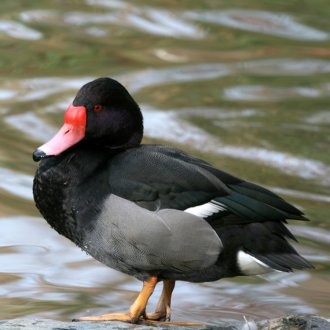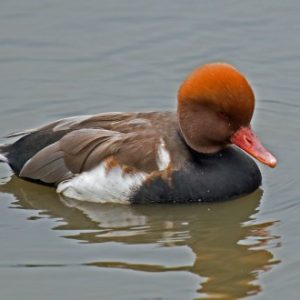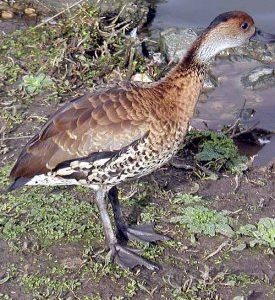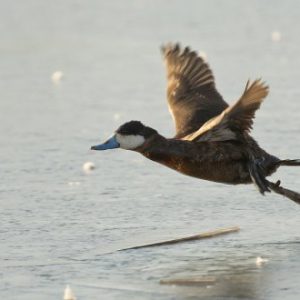Rosy Billed Pochard Duck Netta peposaca
Rosy Billed Pochards or Rosebills are unmistakable ducks and could be called the most striking of all the species of South American ducks. Drakes have a big bright red bill with a prominent knob, with green-sheened dark slate upperparts and contrasting light gray lower parts, with lots of stippling. Female Rosy Billed Pochards are much more subtle in coloring and have a slate-colored bill.
Rosy Billed Pochards are considered diving ducks due to their leg placement, which set far back on the body and makes them awkward walkers on land. And although they dive, they are very adept at dabbling as one of the main ways they acquire food.
Range: Rosy Billed Pochards are native to South America and have a huge range across all of southern South America, from Argentina and Central Chile up through Paraguay into Brazil.
Habitat: Rosy Billed Pochards are mostly found in fresh water lakes, large ponds, and swamps. They tend to be attracted to shallow water with abundant floating vegetation.
Status in the Wild: The Rosy Billed Pochard Duck currently has an extremely large population and range, and thus the species is classified as of “Least Concern.”
Status in Aviculture: Despite the striking beauty of these ducks, they are quite uncommon to find in aviaries in the U.S.
Breeding: Female Rosy Billed Pochard Ducks build a nest in dense vegetation by the side of the water. The clutch usually consists of 8-12 eggs, which are incubated for 26-28 days.
Lifespan: In the wild, Rosy Billed Pochards have an average lifespan of 5-10 years, but they can live up to 20 years old in captivity.
Size: Rosy Billed Pochard Ducks are large ducks, weighing 2-2.25 lbs. and being about 21-22 inches in length.
Housing Requirements: Rosy Billed Pochard Ducks require swimming water. They are active swimmers and foragers in water and spend almost all of their lives swimming. A natural pond would be good, but netting or enclosing them may be necessary, so they are not able to fly away. They get along well with other waterfowl and are easy to raise. They will need protection from predators and some sort of winter shelter will be necessary for areas with harsh winters.
Diet: These ducks eat mostly aquatic vegetable matter, including seeds, roots, and leaves which are acquired mostly through dabbling. Rosy Billed Pochards will do well foraging, and their diet in captivity can consist of a waterfowl or game bird feed supplemented with greens.
Miscellaneous Notes: The species name, peposaca, is from a native word for showy wings, which refers to a broad white stripe that is visible when the ducks outstretch their wings.





